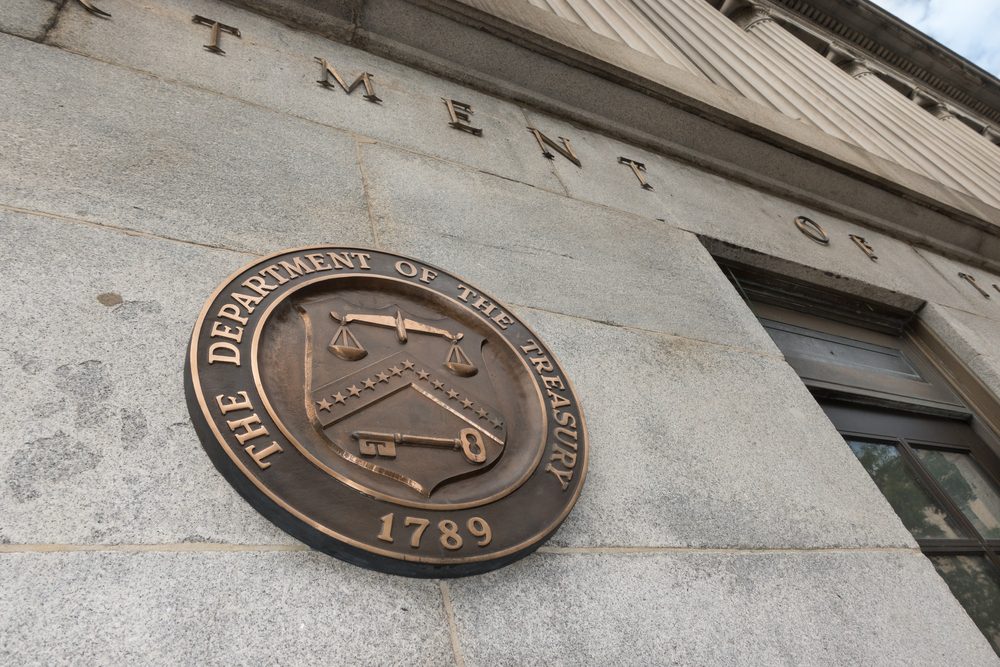Finance
Private finance cannot lead the global response to climate change – World

ARTH MISHRA, CONNOR O’BRIEN
Misplaced faith in private sector solutions delays the redistribution of trillions from developed countries and multilateral institutions.
In response to the looming trillion-dollar global climate finance shortfall, a broad array of policymakers, international bureaucrats, environmentalists, and financial institutions have called for the urgent scaling up of private climate investments.
The logic of private finance mobilisation starts by recognising that developing countries will need climate finance “amounting to US$5.8–5.9 trillion up until 2030”. In the face of such eye-watering sums, private finance offers an enticing solution. By leveraging comparatively small government financing into substantial private investments, governments and international organisations can turn “billions into trillions”, sidestepping the problem facing developed countries of how to justify domestically the global redistribution of trillions of dollars.
Alternatively, developing countries have advocated for a suite of multilateral measures, including sovereign debt cancellation, the redistribution of IMF-issued Special Drawing Rights (SDRs), increased concessional development financing, and even global carbon taxes. These proposals are often perceived to be concerned with global justice and equity, as opposed to efficacy. However, this distinction becomes blurred when the US$5.8–5.9 trillion climate finance needs of developing countries are interrogated more closely.
According to a 2021 UN report, the two most important climate transition needs in developing countries are capacity building and technology transfer and development. In fact, finance needs rank a distant third as a proportion of the US$5.8–5.9 trillion total. There is scant evidence to suggest that private capital can fill this financing gap without a rapid expansion in public investments and locally led initiatives.
The core problem for private climate finance mobilisation constitutes a lack of “bankable”, investment-ready projects. As developing countries call for debt relief and increased multilateral financing, the private sector therefore calls for more government and multilateral support to create private project pipelines. Building these pipelines requires robust local capacity and grant financing to originate and prepare projects. But importantly, pipeline development cannot solve endemic failures in financial markets for sectors such as electricity transmission and distribution.
At a project level, the cost of financing clean energy infrastructure remains concerningly high, even for middle-income countries such as India and Brazil. In this context, private finance-led approaches require that governments and international institutions absorb an exceedingly large share of project risks to entice private capital. Local governments are also made to redirect scarce financial and planning resources in an often-unsuccessful attempt to make sure that their money is spent wisely.
For climate adaptation, private capital is an even riskier gamble. Despite the trillions required to adapt to the impacts of climate change, private capital accounts for a mere 1.6 per cent of all adaptation financing, of which the majority has flowed to developed countries. Investments in early warning systems, global mangrove and forest protection, and water resilience projects are ill-suited to private financing. Private capital would only flow following public spending on climate risk and vulnerability data analysis, project pipeline development, and the establishment of regulations that support new markets. However, the need for adaptation investments is immediate and requires large-scale public investment to ensure that developing countries are not left to face the worst of the climate crisis while waiting for the private sector to catch up.
Across climate adaptation and mitigation projects, expanded public fiscal and technical capacity is key to optimising existing climate projects. These projects have been plagued by limited monitoring, high levels of corruption, and chronically low local support. The recent Better Accountability, Better Finance report claims that up to US$12 of climate finance could be saved for each dollar spent on green accountability practices. Ramping up investments in data and monitoring infrastructure, creating bodies for local consultation, and increasing financial transparency would all significantly enhance the impact and sustainability of climate finance programs. The evidence is clear: bolstering state capacity, alongside project and institutional accountability, is a prerequisite for effective global mitigation efforts. This can only be achieved by significantly expanding existing pools of public and multilateral finance.
Private finance is clearly no panacea for the climate crisis. It is no wonder that the developing countries have long called for far more drastic levels of public and multilateral financing. Rather than seeking to pursue global economic justice alone, developing countries have been acutely aware that trillions of developed country government dollars need to be put on the table. If developing country financing asks are honoured, US$5.8–5.9 trillion would be well within reach. But the challenge remains getting developed countries on board. Proposals such as political economist Dani Rodrik’s “bridging compact” hold some promise, although any equivalent global consensus could only emerge following the recognition that a private finance-centred approach doesn’t provide a workable alternative.

Finance
Basel Committee Reports on Digitalisation of Finance

- The Basel Committee has published a report on the implications of the digitalisation of finance for banks and supervision.
- The report considers both the benefits and risks of new technologies and the emergence of new technologically enabled suppliers for the provision of banking services.
- It identifies eight implications for banks and supervisors relating to macro-structural elements, specific digitalisation themes, and capacity building and coordination.
The Basel Committee on Banking Supervision published a report that considers the implications of the ongoing digitalisation of finance on banks and supervision. The report builds on the Sound Practices: implications of fintech developments for banks and bank supervisors published in 2018, and takes stock of recent developments in the digitalisation of finance.
The report reviews the use of key innovative technologies across various aspects of the banking value chain, including application programming interfaces, artificial intelligence and machine learning, distributed ledger technology and cloud computing. It also considers the role of new technologically enabled suppliers (eg big techs, fintechs and third-party service providers) and business models.
While digitalisation can benefit both banks and their customers, it can also create new vulnerabilities and amplify existing risks. These can include greater strategic and reputational risks, a larger scope of factors that could test banks’ operational risk and resilience, and potential system-wide risks due to increased interconnections. Banks are implementing various strategies and practices to mitigate these risks, but effective governance and risk management processes remain fundamental.
Digitalisation raises regulatory and supervisory implications for both banks and supervisors. These include:
- monitoring evolving risks and adopting a responsible approach to innovation;
- safeguarding data and implementing robust risk management processes; and
- securing the necessary resources, staff and capabilities to assess and mitigate risks from new technologies and business models.
The Committee will continue to monitor developments related to the digitalisation of finance. Where necessary, it will consider whether additional standards or guidance are needed to mitigate risks and vulnerabilities.
Source: BIS
Finance
Treasury Department to Use ‘Automation and Innovation’ to Fight Illicit Finance

The Department of the Treasury has outlined the priorities it will pursue this year to step up the fight against illicit finance.
The agency aims to increase transparency, leverage partnerships and support responsible technological innovation, it said in a Thursday (May 16) press release announcing the publication of its “2024 National Strategy for Combating Terrorist and Other Illicit Financing.”
One of the Department’s priorities for the year is closing legal and regulatory gaps in the country’s anti-money laundering and combating the financing of terrorism (AML/CFT) framework, according to the release. It aims to do so by operationalizing the beneficial ownership information registry; finalizing rules covering the residential real estate and investment advisor sectors; and assessing the vulnerability of other sectors.
A second priority is promoting a more effective and risk-focused AML/CFT regulatory and supervisory framework for financial institutions, the release said. The Department will work to do so by providing clear compliance guidance, sharing information and providing resources for supervision and enforcement.
The Department also aims to enhance the operational effectiveness of law enforcement, other U.S. government agencies and international partnerships to combat illicit finance, per the release.
The fourth priority announced in the press release is realizing “the benefits of responsible technological innovation” by developing new payments technology, supporting the use of new mechanisms for compliance, and using automation and innovation to find new ways to fight illicit finance, the release said.
“In this critical moment for our national and economic security, we need to continue to close the pathways that illicit actors seek to exploit for their schemes,” Brian E. Nelson, Under Secretary of the Treasury for terrorism and financial intelligence, said in the release. “We recognize the threat illicit financial activity represents to our national security, economic prosperity, and our democratic values, and are focused on addressing both the challenges of today and emerging concerns.”
These recommendations are meant to address key risks the Department of the Treasury identified in February in its “2024 National Money Laundering, Terrorist Financing, and Proliferation Financing Risk Assessments.”
In another recent move, the Treasury Department said in April that it wants more tools to curb terror financing.
In testimony released ahead of an April 9 appearance before the Senate Banking Committee, Deputy Secretary Wally Adeyemo said terrorist groups and state actors continually “seek new ways to move their resources in light of the actions we are taking to cut them off from accessing the traditional financial system.”
For all PYMNTS B2B coverage, subscribe to the daily B2B Newsletter.
Finance
The Great Financial Crisis kick started the private credit boom, but SVB was its true 'watershed' moment, Sixth Street co-president says

The Global Financial Crisis threw millions of Americans out of their homes and jobs, upending the entire economy. But for the private credit industry, it was actually an awakening of sorts.
Over the past few decades, U.S. banks’ problems have signaled opportunity for the private credit market, and that’s particularly true of the Global Financial Crisis and the collapse of Silicon Valley Bank last March. When banks have issues, U.S. businesses’ desire for capital rarely wanes dramatically, and that leaves room for alternate lenders.
At the Fortune Future of Finance conference on Thursday, Joshua Easterly, co-CIO and co-president of the global investment firm Sixth Street, explained how he was working at Goldman Sachs after the Global Financial Crisis in 2009, running a team that did public and private market transactions in distressed debt and special situations, when he came to the realization that the lending industry had changed forever.
“It was the intended consequence, not the unintended consequence of regulations after the Crisis,” he said of the private credit boom. “Policymakers…wanted to figure out how to diffuse risk away from the taxpayer, but you couldn’t crush the economy by reducing credit, and so private credit history grew.”
Easterly argued that the private credit industry has a “better model” than the banking industry when it comes to lending risk, because it holds more capital for loans on balance sheets. And that made him come to a startling realization in 2009. “Huh? I think I need to go find a new job,” he recalled saying to a colleague. “So [the move to private credit] was a little bit about necessity.”
Carey Lathrop, partner and chief operating officer of credit at Apollo Global Management, echoed Easterly’s comments, noting that when he started in the private credit industry “it was clear how hard it was to get things done that made economic sense” in public markets after the GFC.
The rise of private credit since 2008 has been historic, to say the least. Before the crisis, there was under $400 billion in total assets and committed capital in private credit. In 2023, that number jumped to $2.1 trillion, according to the International Monetary Fund. But it wasn’t just the Crisis that spurred the private credit boom. After the collapse of several regional banks in March 2023, headlined by the tech startup focused Silicon Valley Bank, businesses nationwide once again turned to private credit amid a liquidity crunch.
While SVB struggled after rapidly rising interest rates devalued its long-dated bonds, leading to a run on deposits from its list of influential and well-connected clientele, the manner in which private credit operates can lead to more stability in trying times.
Apollo’s Lathrop explained that banks like SVB “had this mismatch with a lot of long-term assets with assets with short term liabilities” that led to unrealized loan losses on their books as rates soared. But private credit doesn’t have this same issue. “We don’t run the [private credit] business that way,” he noted. “We were much more match funded.”
To his point, unlike banks, which fund a majority of their lending through customer deposits (and often uninsured deposits), private credit funds tend to use money from wealthy investors and institutions to make loans, leaving them less exposed to rising interest rates.
Sixth Street’s Easterly said the SVB drama essentially showed “the robustness” of the private credit] business model, leading a raft of new clientele. “I think it was a watershed moment for the value of the asset class.”
-

 Politics1 week ago
Politics1 week ago'You need to stop': Gov. Noem lashes out during heated interview over book anecdote about killing dog
-

 News1 week ago
News1 week agoMan, 75, confesses to killing wife in hospital because he couldn’t afford her care, court documents say
-

 Politics1 week ago
Politics1 week agoRFK Jr said a worm ate part of his brain and died in his head
-

 World1 week ago
World1 week agoPentagon chief confirms US pause on weapons shipment to Israel
-

 Politics1 week ago
Politics1 week agoHere's what GOP rebels want from Johnson amid threats to oust him from speakership
-

 World1 week ago
World1 week agoPro-Palestine protests: How some universities reached deals with students
-

 World1 week ago
World1 week agoConvicted MEP's expense claims must be published: EU court
-

 Politics1 week ago
Politics1 week agoCalifornia Gov Gavin Newsom roasted over video promoting state's ‘record’ tourism: ‘Smoke and mirrors’















